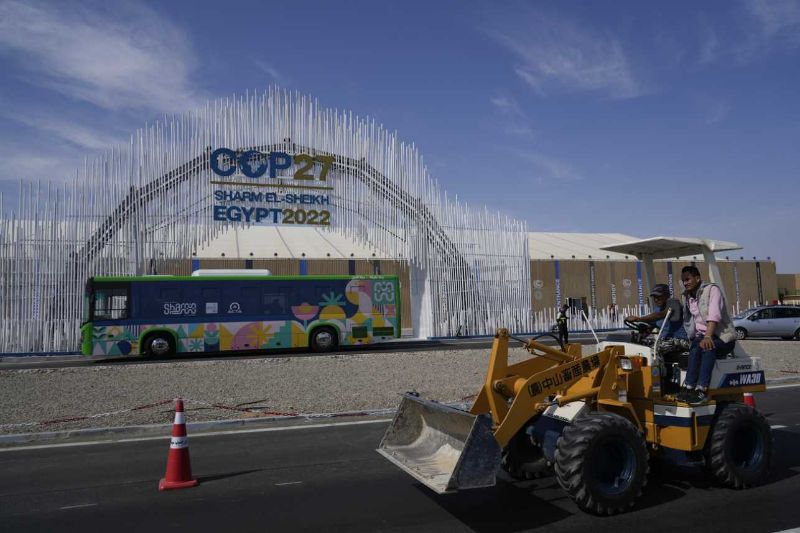COP27: Climate finance needs more transparency
At the 21st Climate Change Conference (COP21) held in Paris in 2015, all countries agreed for the first time to limit climate change with individual reduction targets for greenhouse gases. Before that, only the developed countries had to reduce greenhouse gases – countries like China, India, and South Korea were not obliged to do so.
In order to persuade developing and emerging countries to set their own reduction targets, industrialised countries had already pledged generous and continuing financial resources prior to 2015. Support for climate mitigation and adaptation was to reach 100 billion US dollars annually from 2020. This was a central promise that made the Paris Climate Agreement possible.
At the 27th Climate Change Conference (COP27) in Egypt, which is now running for two weeks, climate finance is once again a dominant topic. The fact that the funds hwere not provided as generously as once promised has already caused a tense atmosphere in the run-up to the conference.
According to the OECD, the highest level to date was reached in 2020 with 82 billion US dollars.1 Civil society has been criticising for some time that the payments reported by the donor countries are clearly lagging behind the targets. In the meantime, however, it has become increasingly clear how much reality and promises have diverged.
Large funding gaps
It is important to understand that tracking international climate finance in a reliable way is costly and difficult: For one thing, the term is not clearly defined. For another, donor countries determine what they identify as climate-relevant projects.
In a study recently published in Nature Climate Change, two colleagues from ETH Zurich and the University of St. Gallen and I have taken a closer look at the reported climate finance flows of the last 20 years.2 Using artificial intelligence, we analysed 2.7 million bilateral development projects based on their textual descriptions and classified them according to their climate relevance.
The result: for the post-Paris period (2016 - 2019), we identified around 40 percent less climate finance than officially communicated by the donors. We conclude that donor countries are not only paying less than promised, but that they are also identifying projects as climate-relevant that have little to do with climate – and vice versa: projects with clear climate relevance are not counted as such.
Quote: "More transparency in the reported financing of climate measures would also serve the negotiations on climate finance targets."
The tendency towards unfulfilled promises is problematic for countries that depend on this support; for the climate conference, because scepticism about the matter directly affects negotiations; and for all of us, because the climate continues to heat up.
Needed: A confidence-building roadmap
Whether COP27 will go down in the history books as the promised "conference of implementation" depends on whether the states can agree on an ambitious financing agenda. However, there is now much more at stake than the promise of yesteryear. In my view, the following aspects are central:
- Meeting the 100-billion-dollar target
Cooperation can only succeed if there is trust. Developed countries must show that they are willing to keep their promises. This requires that they provide the missing funds and ensure a common understanding and trust. This is where our analysis tool, Climate Finance BERT, comes in.2 By allowing all countries in principle to review climate finance according to uniform criteria, it creates transparency and allows discussion at eye level.
- Laying the foundation for a new financing target
A common understanding and more trust could also help in the current expert dialogues for a new and higher financing target from 2025.3 This is not yet being negotiated at COP27, but a clear commitment by developed countries is needed. The target should also include sub-targets for grants and adaptation finance, so that poorer countries can benefit more from the investments.4
- Helping to cope with climate damage
Developing countries are calling for support for the damage caused by climate change.5 Until now, donor countries had refused to explicitly finance the management of climate damage – only emission reduction and adaptation (the 100-billion-dollar target) were supported. This could now change.5 For the first time, major donor countries like the USA are signalling support; and the issue has been included in the negotiations.7
- All countries must reduce emissions
If industrialised countries move on the above points, emerging economies are likely to move as well. The Emissions Gap Report shows that China already emits twice as much greenhouse gas as the USA.8 If all countries realize their current reduction targets, global emissions would fall by 5 to 10 percent by 2030. However, at least 30 per cent would be necessary. This will not be possible without substantial contributions from emerging countries: by 2030, investment in emissions reduction must at least quadruple in industrialised countries and triple in developing countries.
If COP27 succeeds in identifying credible pathways for delivering the necessary investments, it would be an important confidence-building success. We hope that our research will make the reporting of climate finance more transparent – this would also benefit the negotiations on financing targets.
